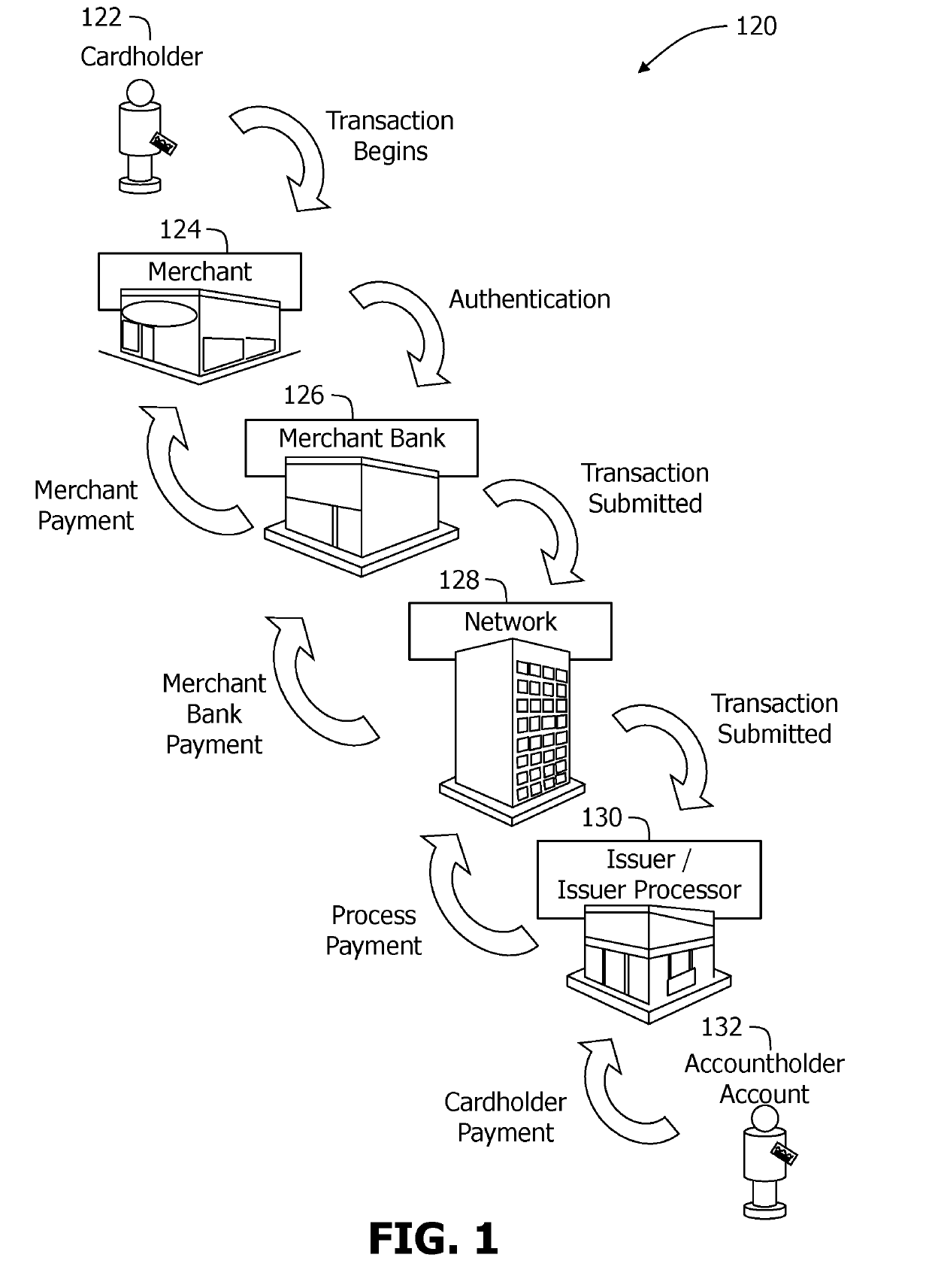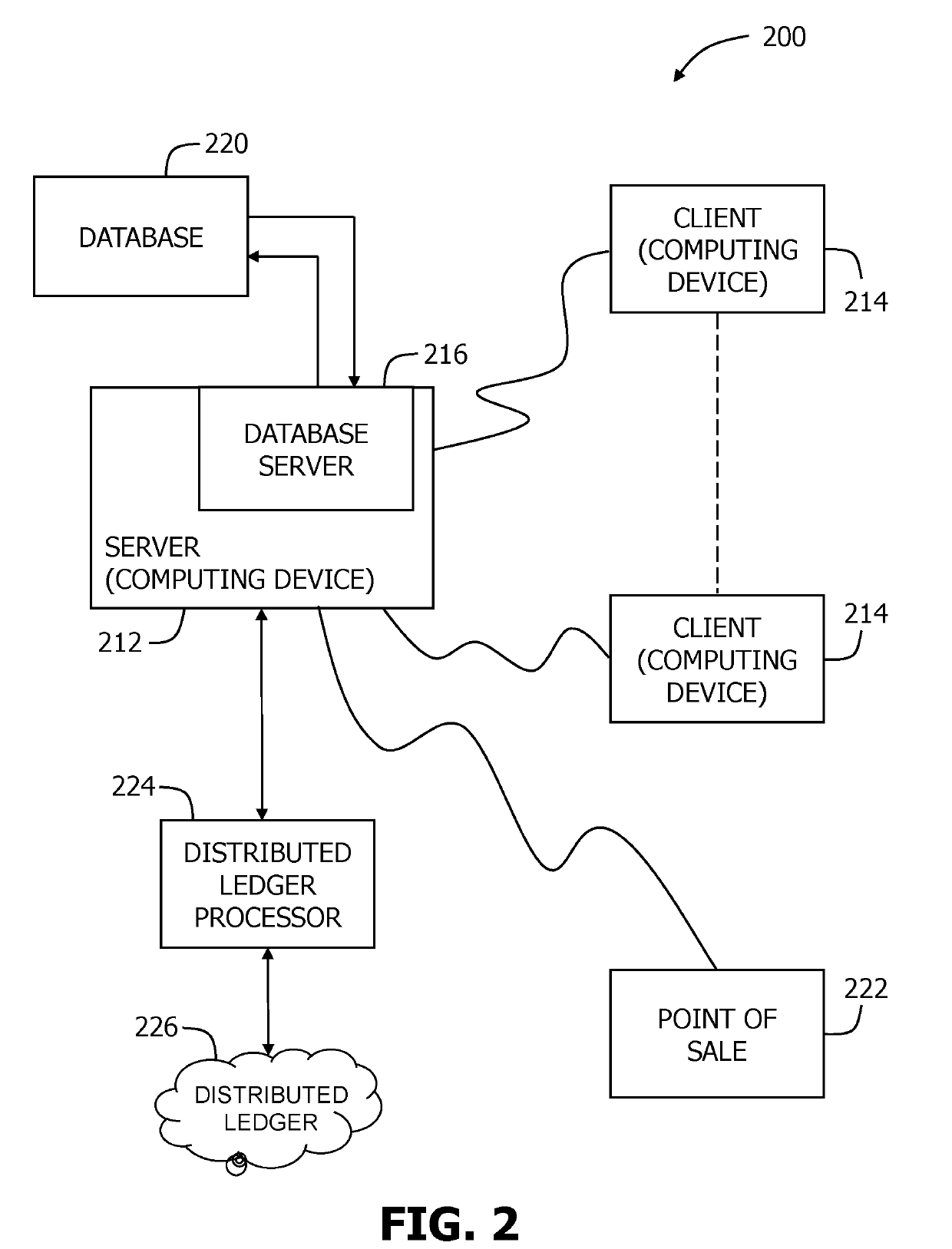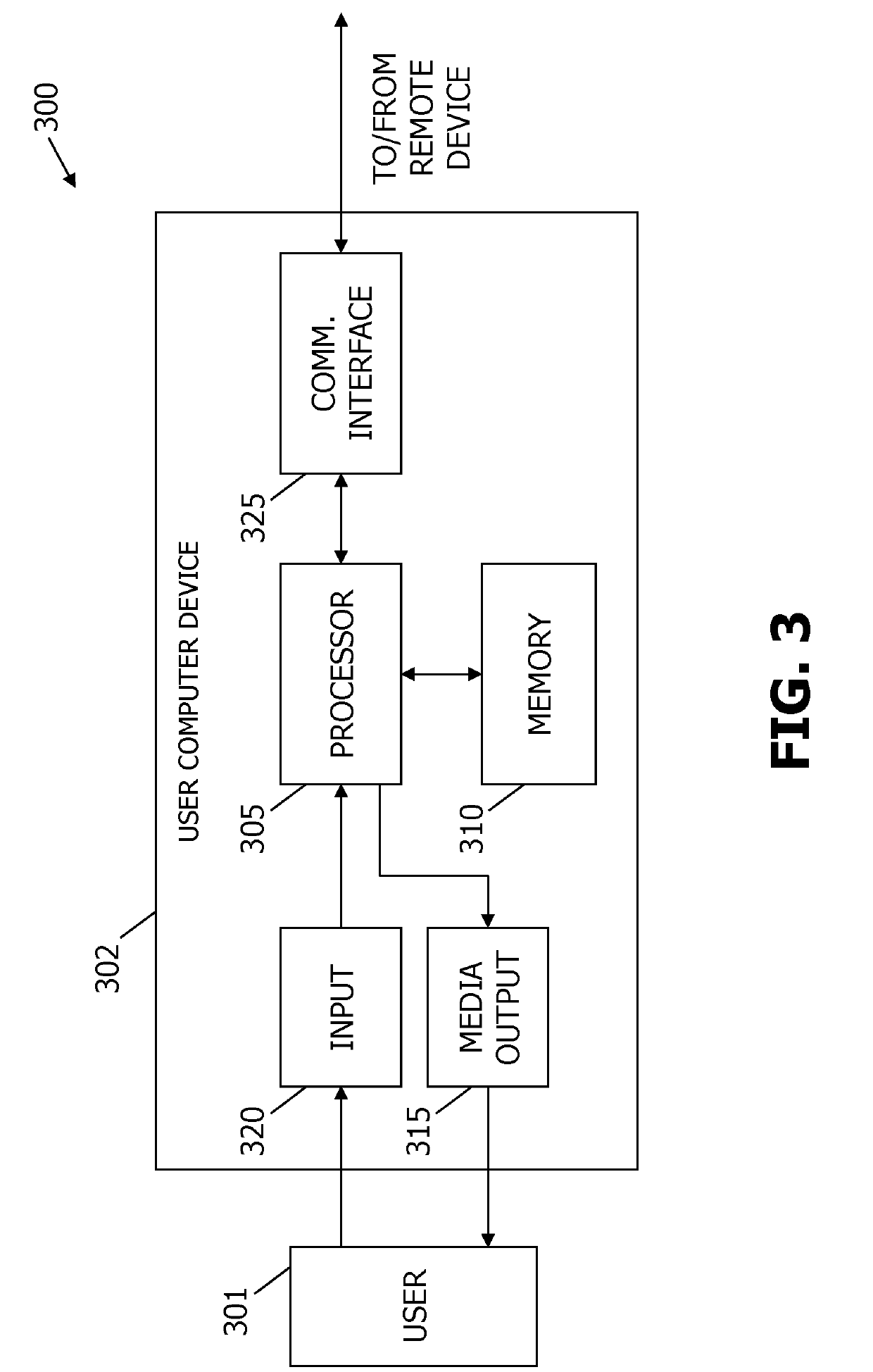Systems and methods for distributed peer to peer analytics
a peer-to-peer, distributed technology, applied in the field of data analytics ecosystems, can solve the problems of large delay and further costs in sharing data, untimely or obsolete output of such analytics by the time it is fully processed, and the silos process requires costly and complex technology investments
- Summary
- Abstract
- Description
- Claims
- Application Information
AI Technical Summary
Benefits of technology
Problems solved by technology
Method used
Image
Examples
Embodiment Construction
[0016]The following detailed description illustrates embodiments of the disclosure by way of example and not by way of limitation. The description clearly enables one skilled in the art to make and use the disclosure, describes several embodiments, adaptations, variations, alternatives, and uses of the disclosure, including what is presently believed to be the best mode of carrying out the disclosure. The disclosure is described as applied to example embodiments, namely, methods and systems utilizing peer to peer distributed ledgers to verifiably submit analytic data to a decentralized network in real time. Systems and methods according to the disclosure herein thus provide significantly more speed and accuracy into the data gathering process of analytics for participants that desire analysis of particular data sets, but may not themselves perform such complex data analysis.
[0017]As used herein, an element or step recited in the singular and proceeded with the word “a” or “an” shoul...
PUM
 Login to View More
Login to View More Abstract
Description
Claims
Application Information
 Login to View More
Login to View More - R&D
- Intellectual Property
- Life Sciences
- Materials
- Tech Scout
- Unparalleled Data Quality
- Higher Quality Content
- 60% Fewer Hallucinations
Browse by: Latest US Patents, China's latest patents, Technical Efficacy Thesaurus, Application Domain, Technology Topic, Popular Technical Reports.
© 2025 PatSnap. All rights reserved.Legal|Privacy policy|Modern Slavery Act Transparency Statement|Sitemap|About US| Contact US: help@patsnap.com



